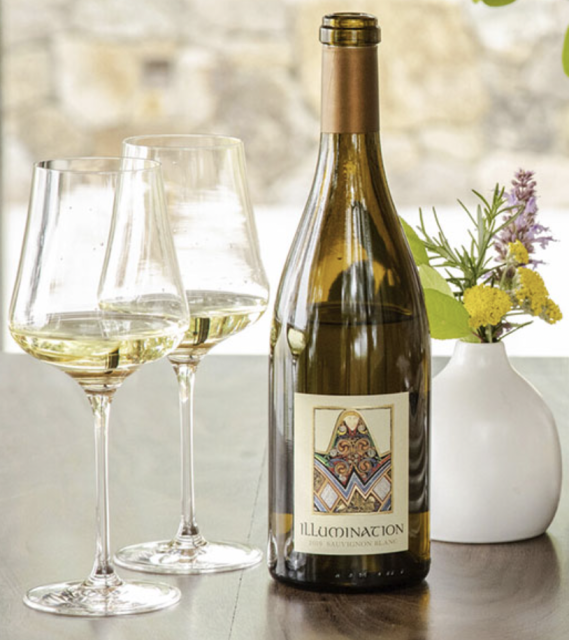This website uses cookies so that we can provide you with the best user experience possible. Cookie information is stored in your browser and performs functions such as recognising you when you return to our website and helping our team to understand which sections of the website you find most interesting and useful.
Why a Napa estate is selling Sauvignon Blanc via Bordeaux
Despite selling out in the US on release, Napa estate Quintessa has chosen to distribute its white wine, called Illumination, through La Pace de Bordeaux – but why?

Marking the first white wine from Napa to sell through the French distribution system, Illumination is indeed a rare breed, and one of the very few white wines to be handled by La Place – as the system is often referred to.
The wine, which is a blend of Sauvignon Blanc and Semillon, has historically sold out quickly on release in the US, primarily through Quintessa’s ‘direct to consumer’ business. Indeed, from its inception in 2006 until 2013, Illumination was only available to buy from the winery.
But after a trial selling the wine to the global trade via La Place in 2022, the wine is now putting all its business-to-business sales outside the US into the hands of the French négoces.
At a dinner in London last week, Quintessa winemaker Rebekah Wineburg told the drinks business why the producer is changing its approach.
“We tried selling our 2021 Illumination via three négociants in September last year, with just 100 cases, and it sold out very quickly, so this year we are going to release the 2022 Illumination on a much larger scale with nine négociants,” she said, noting that the total production is of this latest vintage is 4,000 cases.
Continuing, she said that she was looking forward to the release, which will take place in September, along with all the non-Bordeaux brands that are handled by La Place – as opposed to the wines from the region that are sold en primeur in April. “I’m excited to be sharing Illumination with the world,” she said, implying that its current audience was highly localised.
But Quintessa’s experience of selling via La Place predates Illumination, having begun to sell Quintessa, its red wine – a blend of Cabernet Sauvignon and other Bordeaux grapes, including Carmenère – since 2019.
Such a move was helped by the appointment of Diego Garay as Quintessa’s export director, a Chilean wine industry figure who had previously worked for Viña Seña and before that, Almaviva – two Chilean fine wines that were sold through the French distribution system.
Before the decision to sell Quintessa through La Place, the property exported less than 1% of its production, but three years later, sells around 15% of its annual output abroad, with aims to increase that to one-third.
Wineburg explained the reason for this drive. “We spent the first 20 years proving domestically that we can make great wine, then from 2010 we knew we had to prove that our wine was age-worthy, so we started holding back some wine for late release – which is unusual for a Napa property, which normally sells out on release – so three years ago we started with our 10-year release.”
Continuing the said, “Now, the third stage is to prove we are a great terroir of the world to the world, and to do that, you have to be all over the world” – which explains the export focus, and the role of the French distribution system.
Finally, she also said that the move to develop business outside of the domestic market had helped her better understand Quintessa’s source area, which is Napa’s sub-region of Rutherford.
“I’ve been in Napa for 18 years, and it was not until we sold our first vintage on La Place three years ago that I started to think about the estate more deeply and better, because when you are talking to people in California, you can assume they know Quintessa, or at least know Napa and Rutherford,” she said.
“But I realised with an international audience that I had to first talk about where we are, and the geology of Napa, before introducing Rutherford and then Quintessa; I had to look at everything with fresh eyes,” she admitted.
As previously reported by db, Quintessa was a former farm that was bought by Chilean couple Agustin and Valeria Huneeus in 1989, and planted with vines the following year.
Agustin, who had been a shareholder in Chile’s biggest wine group, Concha y Toro, chose to plant Cabernet Sauvignon in line with Napa’s rising fame for this grape, as well as Cabernet Franc, Merlot and Petit Verdot. Also, unusually, but due to his Chilean heritage, he put Carmenère in the ground too, the emblematic grape of Chile, although its native home is Bordeaux.
Since the first plantings of Carmenère in 1990, Agustin has added more, with a second, third and then a fourth block put in at the estate, meaning that Quintessa now has 8 acres (3.2ha) of the grape.
More Carmenère has been planted because “it has a very long growing season,” which favours Napa’s late summertiime hot, dry conditions, while it also performs well on the Quintessa’s sites with sandy and silty soils, according to Wineburg.
Read more
How Carmenère is finding a new home in Napa
What does it take for non-Bordeaux wines to succeed on La Place?

